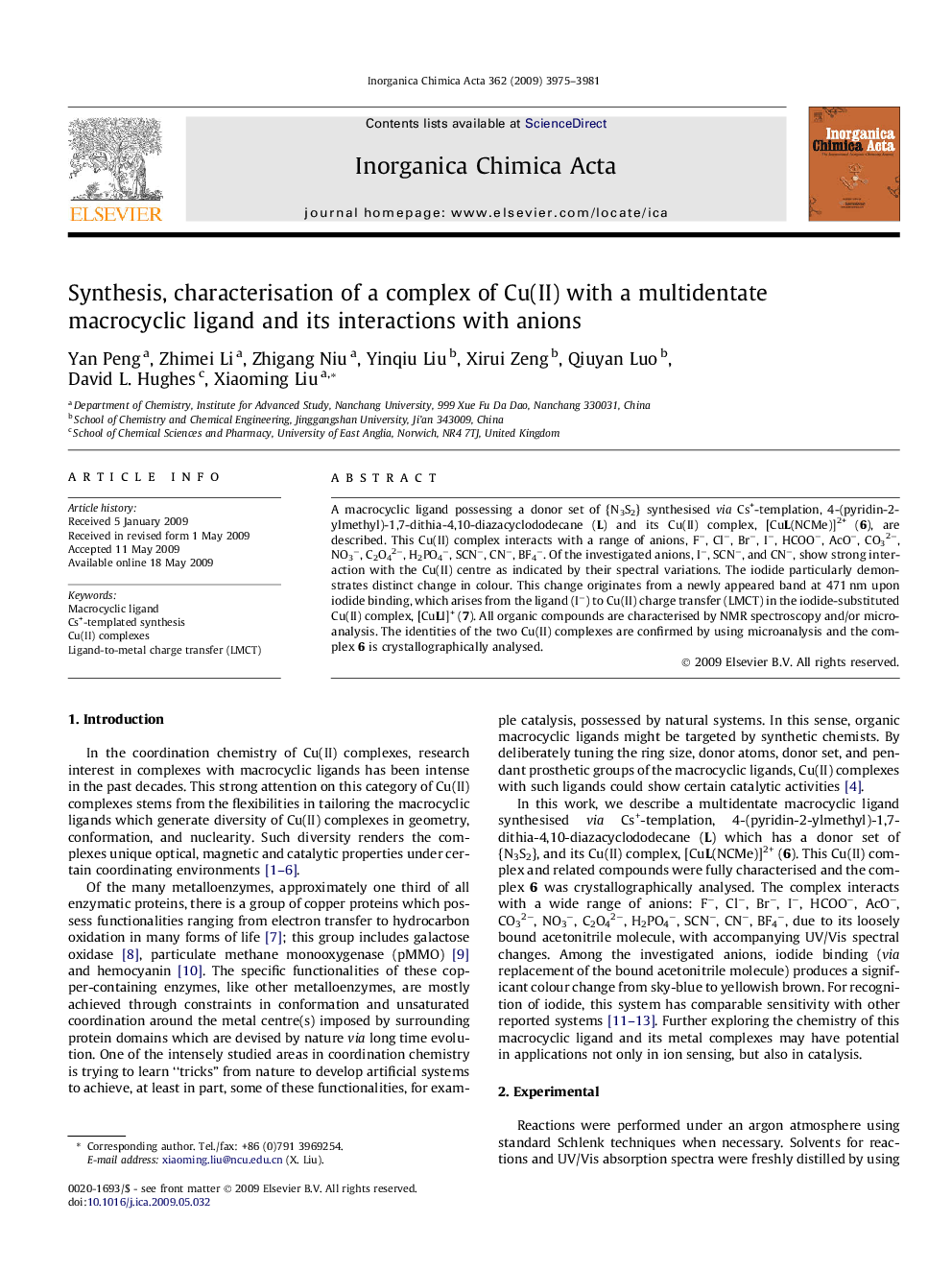| Article ID | Journal | Published Year | Pages | File Type |
|---|---|---|---|---|
| 1308299 | Inorganica Chimica Acta | 2009 | 7 Pages |
A macrocyclic ligand possessing a donor set of {N3S2} synthesised via Cs+-templation, 4-(pyridin-2-ylmethyl)-1,7-dithia-4,10-diazacyclododecane (L) and its Cu(II) complex, [CuL(NCMe)]2+ (6), are described. This Cu(II) complex interacts with a range of anions, F−, Cl−, Br−, I−, HCOO−, AcO−, CO32−, NO3−, C2O42−, H2PO4−, SCN−, CN−, BF4−. Of the investigated anions, I−, SCN−, and CN−, show strong interaction with the Cu(II) centre as indicated by their spectral variations. The iodide particularly demonstrates distinct change in colour. This change originates from a newly appeared band at 471 nm upon iodide binding, which arises from the ligand (I−) to Cu(II) charge transfer (LMCT) in the iodide-substituted Cu(II) complex, [CuLI]+ (7). All organic compounds are characterised by NMR spectroscopy and/or microanalysis. The identities of the two Cu(II) complexes are confirmed by using microanalysis and the complex 6 is crystallographically analysed.
Graphical abstractA macrocyclic ligand synthesised via Cs+-templation forms a complex with Cu(II) with a loosely bound solvent molecule as its sixth coordinated ligand. This solvent molecule is readily substituted by other anions, for example, I−, CN− and SCN−. But only the iodide binding produces distinct change in colour.Figure optionsDownload full-size imageDownload as PowerPoint slide
